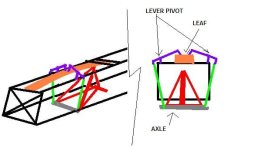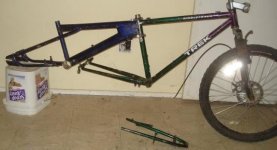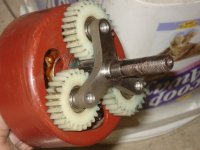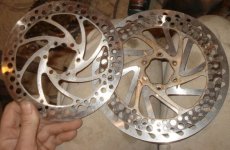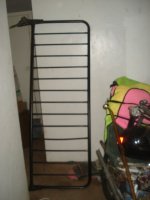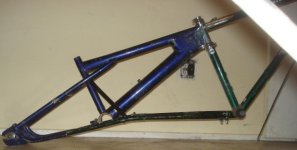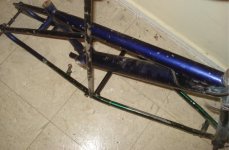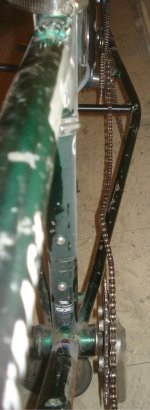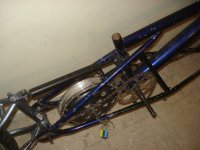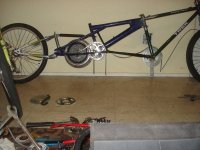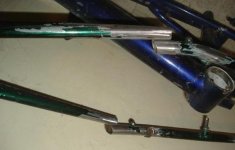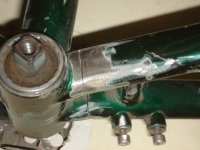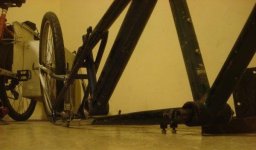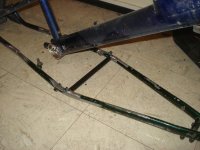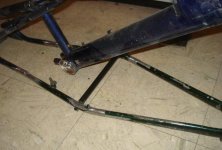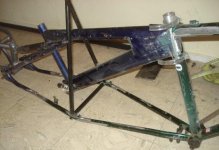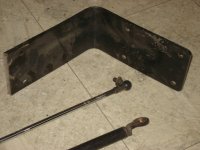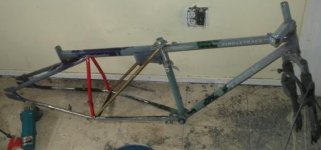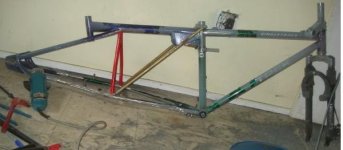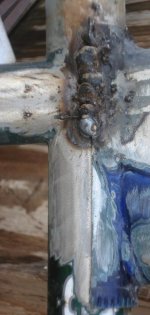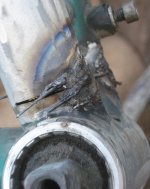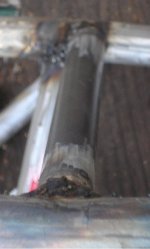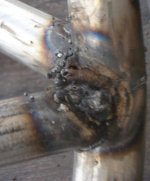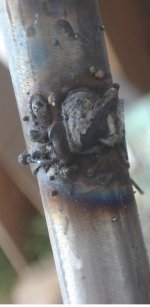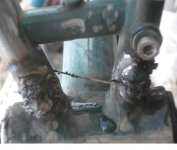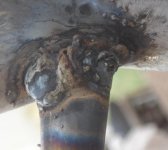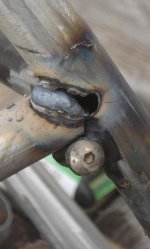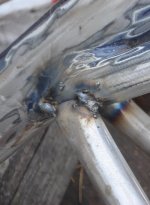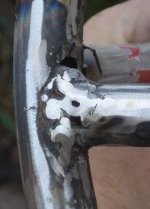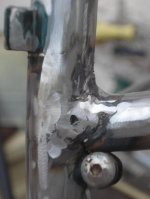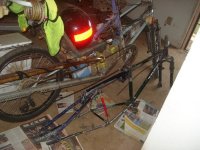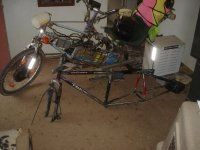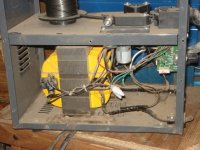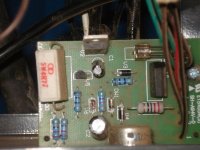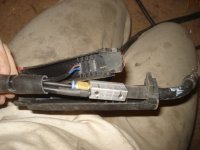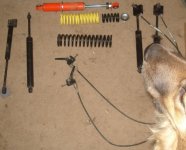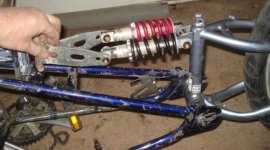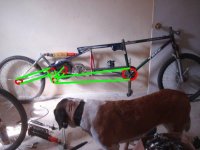Sorry, bottom sketch is just an angle view of the swingarm/etc, to show how it attaches to the BB/frame. Springs were left out so the rest would be visible; it all is the same as the top sketch.
I could do this swingarm one of two ways:
A) fixed bolt/pivot at each end of spring, doesnt' slide but only bows upward in center.
B) Fixed bolt at one end (front?) with slide pivot at other end (easiest at rear), not sure if that would even do anything in this design.
Which would probably work better?
If possible, I'd certainly prefer to build the swingarm/leaf one of the above ways, rather than the one below.
I came up with another method of using the leaf spring with the existing stuff previously sketched:
Would this one work, assuming my cargo pod frame (orange) is stiff enough?
Bike frame is all black, and would be welded as one piece. Cargo frame is orange, welded to bike frame along intersections with black frame visible.
Leaf spring is green, with it's pivot at rear of cargo frame, and the slide bracket (Ubolt of some type) onto the cargo frame.
Swingarm (swing frame) is red, and it pushes against the center of the leaf spring at it's axle, upwards. For now I'd leave it as the whole swing frame to test the idea, then build one just for this purpose if it works under the cargo loads I'd like this to haul (up to at least a couple hundred pounds in addtion to the bike's and my weight).
I guess one advantage of this way is that all the cargo weigth is directly transferred to the wheel, rather than via the bike frame. But it also means that the bike weight (and mine) has to go thru the cargo frame, and leverages against the cargoframe/bikeframe joins. Most of the time there won't be much on the cargo frame.
I could do this swingarm one of two ways:
A) fixed bolt/pivot at each end of spring, doesnt' slide but only bows upward in center.
B) Fixed bolt at one end (front?) with slide pivot at other end (easiest at rear), not sure if that would even do anything in this design.
Which would probably work better?
If possible, I'd certainly prefer to build the swingarm/leaf one of the above ways, rather than the one below.
I came up with another method of using the leaf spring with the existing stuff previously sketched:
Would this one work, assuming my cargo pod frame (orange) is stiff enough?
Bike frame is all black, and would be welded as one piece. Cargo frame is orange, welded to bike frame along intersections with black frame visible.
Leaf spring is green, with it's pivot at rear of cargo frame, and the slide bracket (Ubolt of some type) onto the cargo frame.
Swingarm (swing frame) is red, and it pushes against the center of the leaf spring at it's axle, upwards. For now I'd leave it as the whole swing frame to test the idea, then build one just for this purpose if it works under the cargo loads I'd like this to haul (up to at least a couple hundred pounds in addtion to the bike's and my weight).
I guess one advantage of this way is that all the cargo weigth is directly transferred to the wheel, rather than via the bike frame. But it also means that the bike weight (and mine) has to go thru the cargo frame, and leverages against the cargoframe/bikeframe joins. Most of the time there won't be much on the cargo frame.


